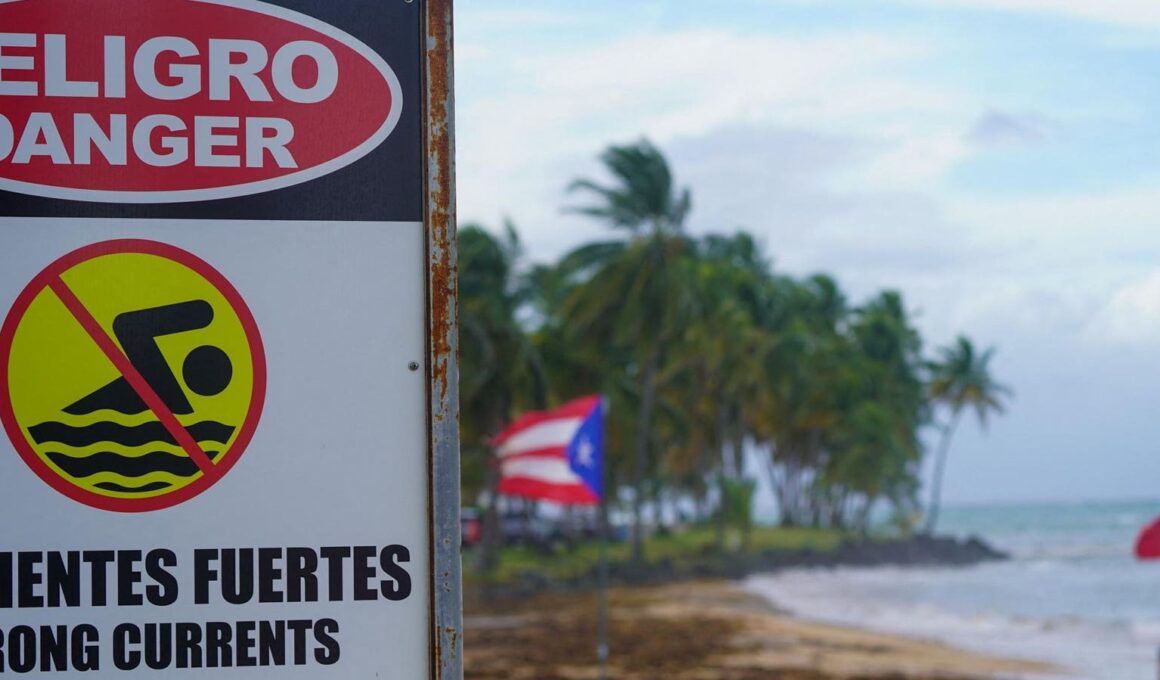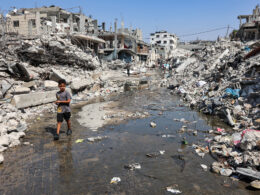Topline
What was Tropical Storm Ernesto became Hurricane Ernesto north of Puerto Rico on Wednesday, after the storm battered through the Caribbean and left hundreds of thousands of people without power.
Forecasters warned of life-threatening surf and rip currents caused by the storm, despite remaining … [+]
Key Facts
Ernesto’s center is located about 175 miles northwest of Puerto Rico’s capital city of San Juan, with maximum sustained winds of 75 miles per hour as of 11 a.m. EDT, according to the National Hurricane Center.
Significant flooding is expected across Puerto Rico and the U.S. and British Virgin Islands, which are forecast for up to 10 inches and 6 inches of rain, respectively, amid tropical storm conditions, the agency said.
The storm will remain “well offshore” the U.S. East Coast, though the National Hurricane Center warned there is a “significant risk of life-threatening surf and rip currents” through the weekend.
Get Forbes Breaking News Text Alerts: We’re launching text message alerts so you’ll always know the biggest stories shaping the day’s headlines. Text “Alerts” to (201) 335-0739 or sign up here.
What To Watch For
Ernesto is expected to become a major Category 3 storm in the upcoming days as it approaches Bermuda, which forecasters say could be placed under a hurricane watch later Wednesday. It is expected to slow down near the island and weaken slightly into a Category 2 hurricane before picking up speed as it moves northward toward Atlantic Canada by early next week. The storm is not expected to directly threaten the U.S. mainland.
Big Number
648,676. That’s the number of people without power in Puerto Rico as of Wednesday morning, according to Luma Energy, Puerto Rico’s energy provider. Nearly 91% of all customers in the Virgin Islands (45,923) are also without power, according to PowerOutage.us.
Key Background
President Joe Biden approved an emergency declaration for Puerto Rico late Tuesday, authorizing emergency relief for the Caribbean island. Ernesto is the fifth named storm so far this year and comes about a week after Hurricane Debby made landfall in Florida and moved up the East Coast. The first hurricane of the season, Hurricane Beryl, formed in the Atlantic Ocean in late June before strengthening into a major Category 5, weakening as it impacted Jamaica and Mexico’s Yucatan Peninsula before then making landfall in Texas as a Category 1 hurricane. The National Oceanic and Atmospheric Administration predicted before the start of hurricane season that up to 25 named Atlantic tropical storms could form this year, the agency’s most dire preseason forecast ever issued. Above-average sea surface temperatures and a drop in disruptive wind shear caused by the La Niña weather phenomenon were factors in NOAA’s forecast.
Further Reading









